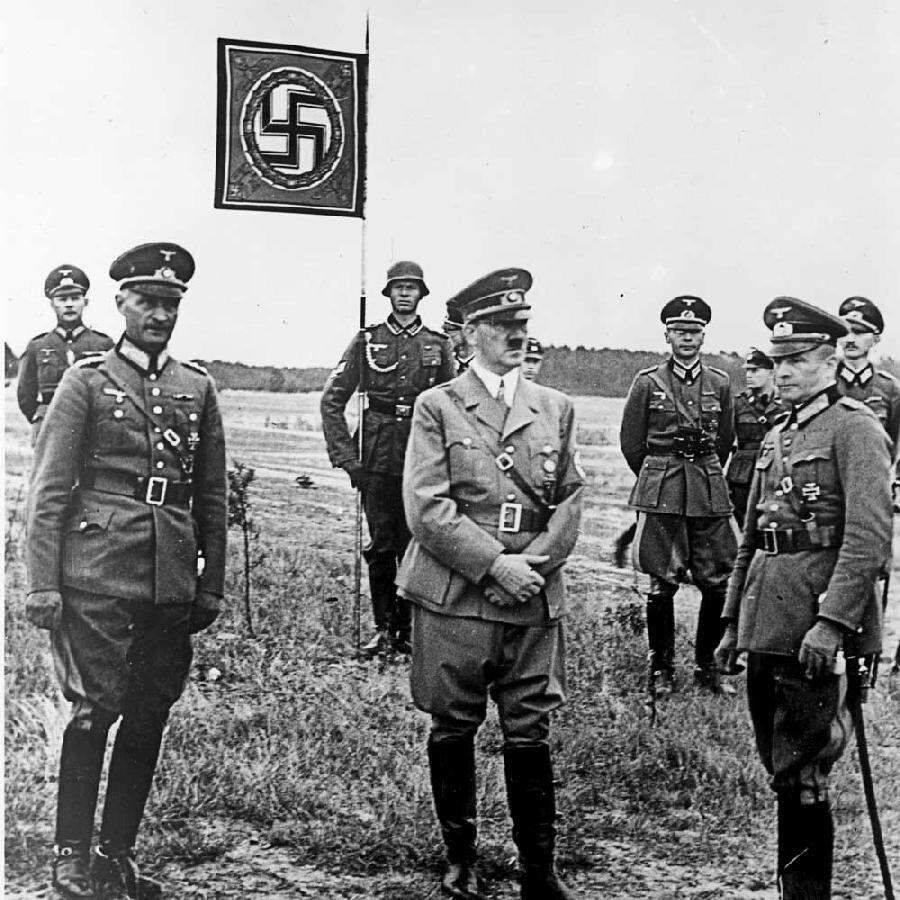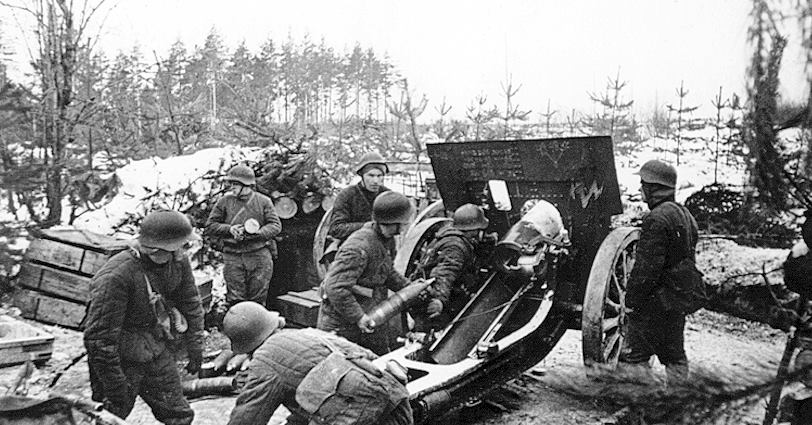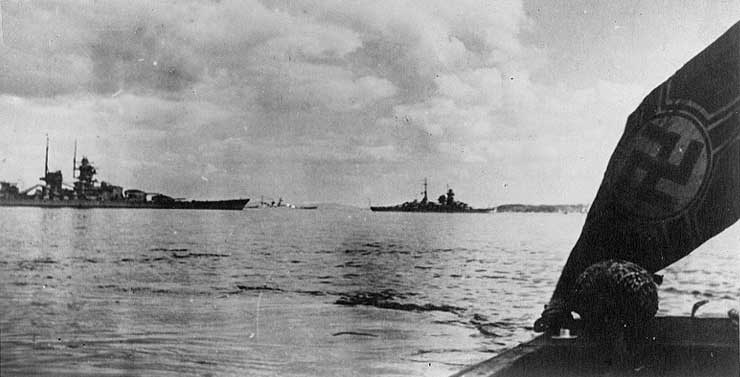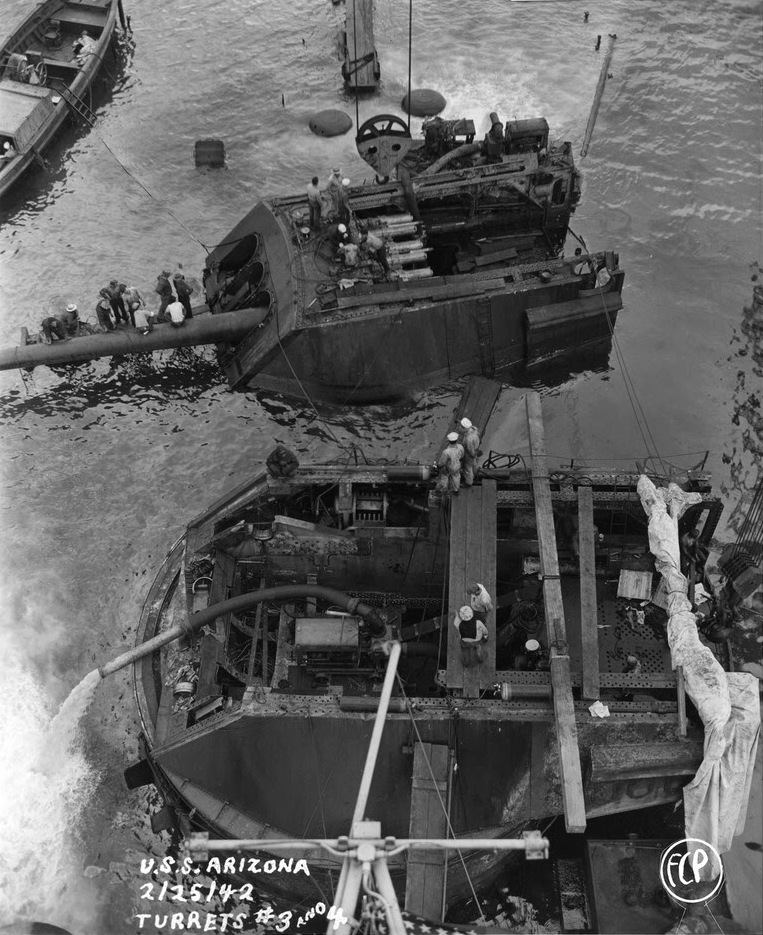Hey Kurt have you ever been to Auschwitz, Dachau or Wewelsburg?
On this day during W.W. 2
-
@captain-walker said in On this day during W.W. 2:
February 3, 1941. Germany
Hitler appoints Erwin Rommel to command the newly-created Deutsches Afrikakorps which will soon be sent to Libya. Hitler considers Erich von Manstein before deciding on Rommel to replace Hans von Funck who is already in Libya making preparations but lacks attacking spirit.
Source: worldwar2daybyday

Wow i had not heard that. Wonder how the war would’ve changed with Manstein in Africa ? I assume Rommel would probably be a divisional commander in the east then ?
Interesting
-
@barnee I suspect he would have been given a Panzer Korps, after his great success leading 7th Panzer in France. I am sure he would still have been an army commander by 43. But would he still have been on the Eastern Front, when things starred going the Russians way?
-
@Wittmann yea corps sounds about right. Manstein was a hard hitter too. Idk if he could have done better than Rommel in africa. idk if Rommel gets Sevastopol or not.
He was definitely a hard charger though, so maybe. Idk I could see both doing better or worse actually. Possibly not much difference either.
That’s called covering all the bases lol : )
-
February 4, 1944. Italy, Anzio
On the Anzio beach head there was fierce fighting as the Germans got their first major counterattack underway. The units on the perimeter, British and American, fought a determined defence battle to hold the line and sustained heavy casualties.
The Irish Guards were amongst the units facing up to this onslaught. With them was John Kenneally, who had already won some fame for his handling of the Bren gun. He was sent back to the beach to collect some replacements in an Army lorry, accompanied by a young Guardsman.
As they drove along the track down to the beach the young man was suddenly a shot through the neck. Keneally stopped quickly but found that the Guardsman had been killed instantly, he then came under fire himself as he crawled under the truck:
"I peered cautiously from under the rear wheels. There was the cover, about 250 yards on my left, a large group of pine trees, tall and thick with foliage. The bastard must be in there somewhere. I realised that from his angle of view all he could see was the back of the truck and the passenger side; I could crawl under the truck, into the driver’s seat, start up be away.
I thought again. The moment I started the motor it would alert him and he would have time to pump three or four shots through the back of the truck before I could get into gear. I could not chance it. I had to try and take him out. I was working myself up into a cold fury. This was bloody guerrilla war; every soldier hates snipers: the odds are always with them. It was to be him or me.
I crawled under the truck and managed to remove the Bren gun from under the driver’s seat. So far, so good. Beyond the ditch where I had laid the guardsman was a deep irrigation gully which followed the line of the track and round the bend. I judged it about ten yards from the front of the truck.
If I could make that, I would have cover almost to the line of the trees. Should I crawl those ten yards and hope he did not spot me, or run it? Shit or bust I curled myself like a spring and dived for the gully; he got off one shot and missed by a mile. I reckon I covered those ten yards in less than a second; self preservation makes supermen of us all.
I landed in the gully, which must have been a foot deep in mud and filth. I wrapped my field dressing round the breech and mechanism of the Bren – this was no time for slip-ups – and crawled well over a hundred yards down the gully till it petered out into a culvert which was covered with undergrowth. By this time I was well camouflaged myself, being covered in mud. I worked my way slowly through the undergrowth to the top of the culvert and peered anxiously through it. I was no more than seventy yards from the trees; all I had to do was spot him.
I slid the Bren gun forward and planted its legs firmly in the earth and got behind it. Where was the bastard? I searched and scanned those trees till my eyes almost popped out. Not a sign. There were occasional movements and rustling but it was only birds.
I did not expect the glint of a rifle barrel. These snipers were too clever for that: they were always covered. I watched endlessly, but nothing; the adrenalin had gone away by now and I thought he must have moved away. I considered heading back for the truck and taking my chance. Suddenly, to my right and high in the dense trees, I saw the slightest of gleams; he must have moved fractionally and the sun caught the end of his telescopic sight.
I pin-pointed the spot and eased the gum into my shoulder. I blasted the whole magazine off into the trees. The noise was shattering after the silence. I put the butt down and watched and waited. The birds had all scattered away, squawking their heads off; then I heard a loud rustling in the trees. There he was, dropping through the foliage from branch to branch till he ended up in a crumpled heap in the long grass. I’d got him and I felt great."
John Kenneally: The Honour and the Shame
Source: WWII today
-
On this day in 1938, Adolf Hitler promotes himself to the head of the Oberkommando der Wehrmacht (OKW) or "High Command of the Armed Forces."

-
February 4, 1940. Finland
Consistent with Timoshenko’s small unit tactics, Soviet artillery, aircraft and tanks bombard Finnish positions in the Summa gap but Red infantry only advance on Summa village. Above Lake Ladoga, Colonel Dolin’s Siberian ski battalion arrives near the village of Kuhmo and counterattacks Finnish 9th division. After a week of pressure, Finnish IV Corps completes the destruction of west Lemetti motti, capturing 4 field guns, 2 antitank guns, 1 mortar, 32 tanks, 6 machineguns, 120 rifles and 26 trucks. Orders for the attack are notable for the first official use of the term “motti”.
Photo: Destroyed Soviet tanks after motti battles in Lemetti. SA-kuva.
Source: worldwar2daybyday

-
February 5, 1941. North Africa.
Operation Compass. At noon, after crossing 150 miles of desert in 30 hours, Combe Force’s armoured cars cut the coast road at the hamlet of Sidi Saleh. 30 minutes later, retreating Italians begin arriving from Benghazi but they cannot break through the British roadblock. By evening, 4th Armoured Brigade reaches the road 10 miles north at Beda Fomm and attacks the Italian column with tanks.
Source: worldwar2daybyday

-
February 7, 1940. Finland
Red Army attacks the Summa gap for the 7th consecutive day. The daily artillery bombardment and tank/infantry attacks, followed by Finnish counterattacks, weakens the Mannerheim Line fortifications, exhausts the defenders and sucks in the Finnish reserves.
Photo: A field gun of the Red Army in action on the Karelian Isthmus. Image via Juri Kilin.
Source: worldwar2daybyday

-
February 8, 1941. North Africa
General O’Connor has plans for Operation Compass to push onwards to Tripoli, Libya, and drive Italian forces from North Africa. However, Hitler has already decided to provide assistance to his ally Mussolini. The first Afrikakorps troops sail for Tripoli from Naples, Italy, aboard German steamers Ankara, Arcturus & Alicante (escorted by Italian destroyer Turbine and 3 torpedo boats). They dock at Palermo, Sicily, for 2 days to avoid British Force H from Gibraltar which is at sea in the central Mediterranean (bound for Genoa).
Photo: German medium tanks Pz.Kpfw. III Ausf.G of the 5th Tank Regiment, 5th Light Mechanized Division ‘Africa’ before being sent to North Africa.
Source: worldwar2daybyday

-
@captain-walker Its fun to see someone rummaging through that turret basket, its a distinct feature of early german tanks when you make the models, I believe Pzkw II has a similarly shaped basket. And of course, radiator and fan covers, license plate lights etc. were all designed in that peculiar german way that you only notice when you operate a miniature tank assembly factory.
-
On this day in 1944, aero-engine factory, Limoges, France. 617 Squadron commander Cheshire made three low-level passes, warning civilians, before bombing commenced.
12 Lancasters of No 617 Squadron, led by its new commanding officer Wing Commander Leonard Cheshire, attacked the Gnome & Rhone aero-engine factory at Limoges in France. This was a very important raid. No 617 Squadron had been experiencing difficulty in finding a useful role after the Dams Raid nearly 9 months earlier. Low-level precision raids on targets in Germany had been too costly. High-level precision bombing on small targets in France and Belgium had been unsatisfactory, despite marking by Oboe-equipped Mosquitos. For this attack, Cheshire was given official permission to attempt low-level marking of this target, which had many French civilian houses near by. The factory was undefended, except for 2 machine-guns, and Cheshire made 3 low-level runs in bright moonlight to warn the French factory workers to escape. On his 4th run, he dropped a load of 30lb incendiaries from between 50 and 100ft. Each of 11 other Lancasters then dropped a 12,000lb bomb with great accuracy; 10 bombs hit the factory and the remaining one fell in the river alongside. The factory was severely damaged and production almost completely ceased. There were few if any casualties among the French people. No Lancasters were lost.
Despite the success of the low-level marking, it was never adopted by the Pathfinders, but was used on raids by No 617 Squadron and No 5 Group.
Source: The National Archives

-
9 February 1945
P-51 Mustangs of the 8th AF return from an escort mission to Lutzkendorf, Germany.
44-15152 QI-T ‘Jersey Jerk’, 44-15666 QI-E ‘Jett Job’, QI-A and QI-P of the 361FS, 356FG, 8AF.
Nearest in shot is Maj. Donald Strait in his personal aircraft 44-15152 QI-T ‘Jersey Jerk’, and tucked just behind is Lt. Shelby N. Jett his is P-51D serial 44-15666 QI-E ‘Jett Job’, with QI-A and QI-P tucked in behind them both. One unknown straggler is seen catching up from behind.

-
@captain-walker Beautiful pic. Thank you.
-
February 11, 1940. Finland
With the Mannerheim Line weakening, Timoshenko opens his main attack. From morning till noon massive artillery barrage (heard 100 miles away), then 120,000 Soviet troops attack into the 12 mile Summa gap. 123rd division penetrates the Lähde sector and 245th Rifle Regiment under Colonel Rosly takes Fort Poppius at 13:30hrs by parking armoured cars in front of the machine gun ports. Finns try to plug the gap but are cut down by Soviet tanks. Strangely, Soviets do not send in reinforcements to exploit this gap. Fighting goes on around Million Fort all night.
Photo: The Red Army’s light tank platoon ready to attack the Karelian Isthmus
Source: worldwar2daybyday

-
Lieutenant-General Arthur Ernest Percival (right), led by a Japanese officer, walks under a flag of truce to negotiate the capitulation of Allied forces in Singapore, on 15 February 1942. It was the largest surrender of British-led forces in history.

-
20 February 1945
Navy Doctors, Corpsmen and a Chaplain administer to the wounded at an Iwo Jima Aid Station.
Navy Chaplain Lieutenant (Junior Grade) John H. Galbreath (right center) is kneeling beside a man who has severe flash burns, received in an artillery battery fifty yards or so away.
"… a sizeable element of beach defenders had survived the Navy’s rolling barrage and added their weight to the fire. As one marine battalion commander remarked, “You could’ve held up a cigarette and lit it on the stuff going by”.
Photographed by Warrant Officer Obie Newcomb, Jr., USMCR.
(Colourised by Royston Leonard)

-
21st Feb 1940
GermanyAdolf Hitler authorized the Operation Weserübung, the invasion of Norway. Lieutenant General Falkenhorst was ordered to submit his final invasion plan by 1700 hours on the same day. Having no clue he was to be assigned this commanding role prior to the meeting and given little time to prepare, Falkenhorst purchased a traveler’s guide to Norway and used it to design a general invasion plan; the general plan he would devise in his hotel room in the next few hours would generally agree with the plan the OKW had come up with thus far.

-
Raising the Flag on Iwo Jima.
This iconic photograph was taken by Joe Rosenthal 74 years ago on this day, February 23rd 1945. It depicts 6 US Marines raising an American flag atop Mount Suribachi, during the fierce Battle of Iwo Jima, Japan.
Colourised by Marina Amaral

-
February 25, 1945
US. Ensign Ardon Rector Ives #382583 of Rockford, Mich., appears to be calmly unbuckling his seat belt and readying to escape from his burning Grumman F6F-5 ‘Hellcat’ of VF-9 fighter carrier group.
His fighter burst into flames when it hit a barrier and other planes while landing on the USS Lexington (CV-16) on February 25 1945.
Ardon Ives was KIA in a dogfight with Japanese fighters just a few weeks later on March 18 1945, aged 23.
(Initially classified as MIA until May 22 1945)
Ensign Ardon Rector Ives, United States Navy, was awarded the Distinguished Flying Cross (Posthumously) for extraordinary achievement while participating in aerial flight as a Fighter Pilot embarked in U.S.S. Yorktown from 16 February 1945 to 18 March 1945.
He is buried in his home town of Rockford, Kent County, Michigan.
(Photo source - US Navy)

-
Salvage work continuing on the sunken battleship USS Arizona in Pearl Harbor, Hawaii, 25 February 1942. Note Arizona’s two after main turrets being pumped out and disassembled.







